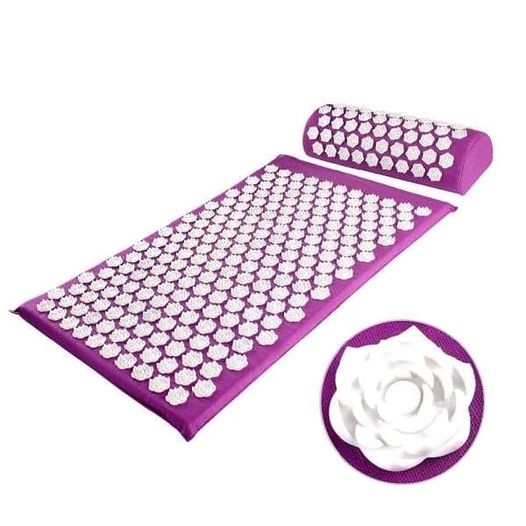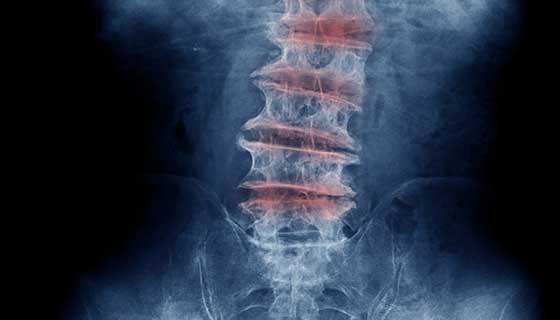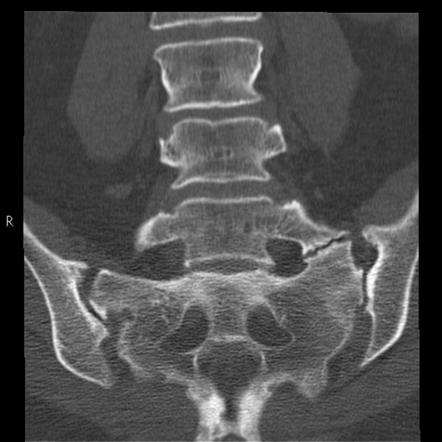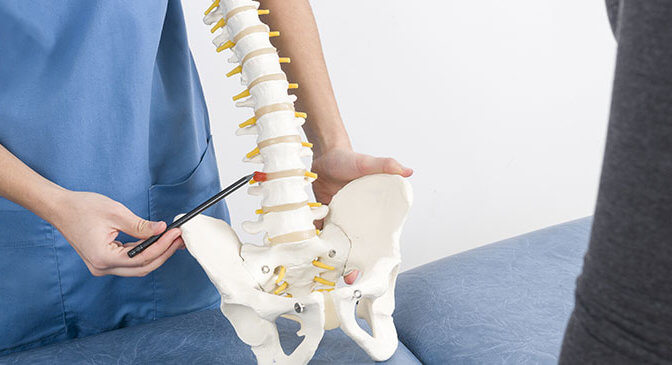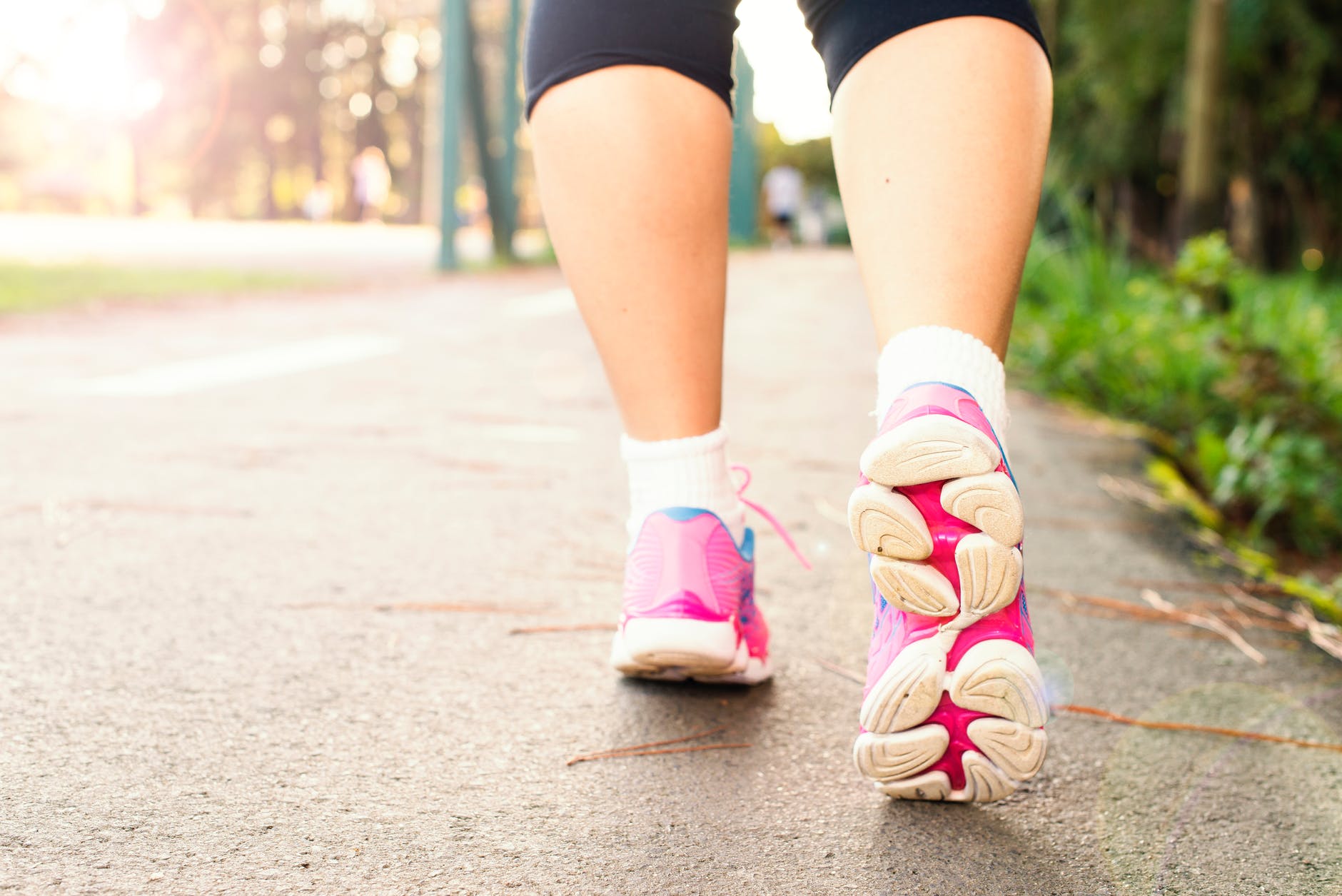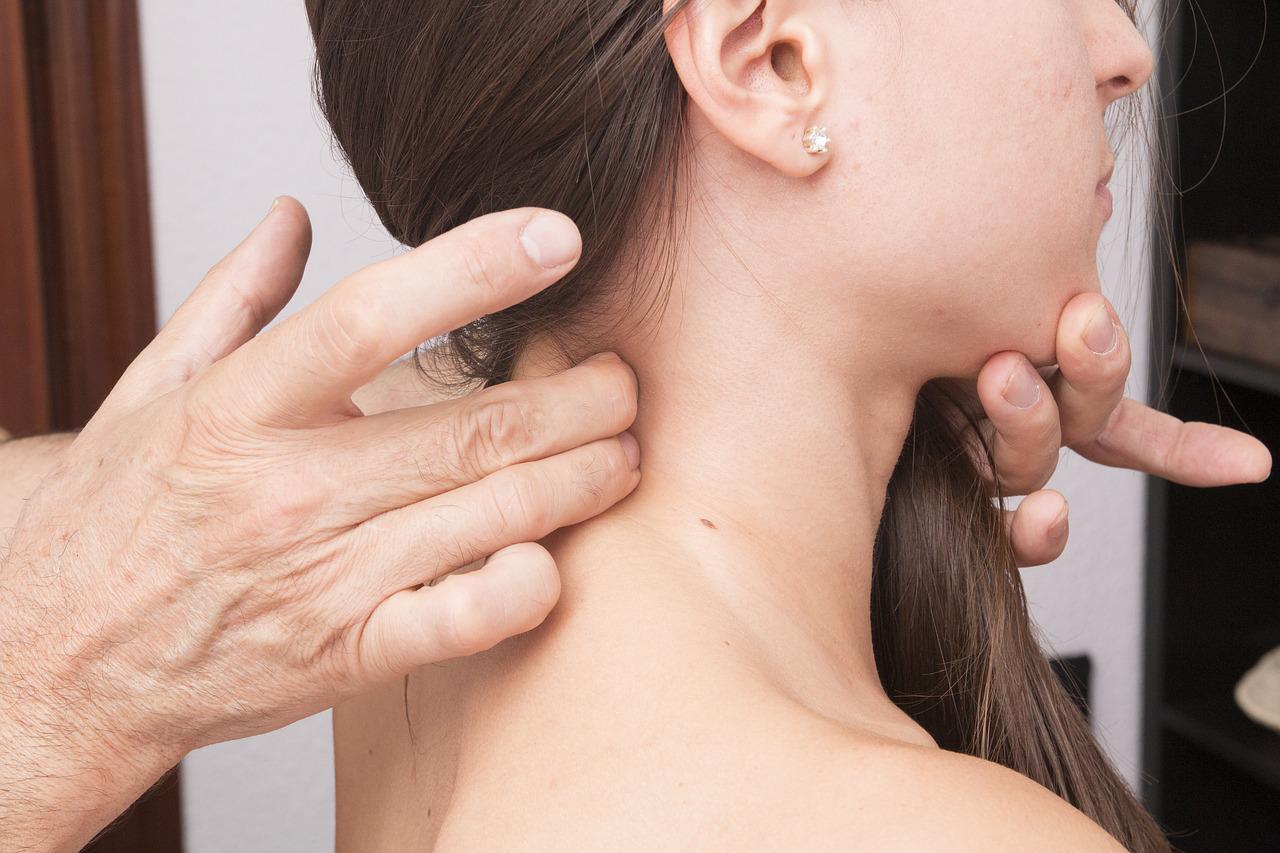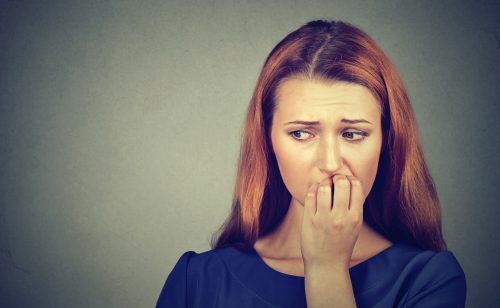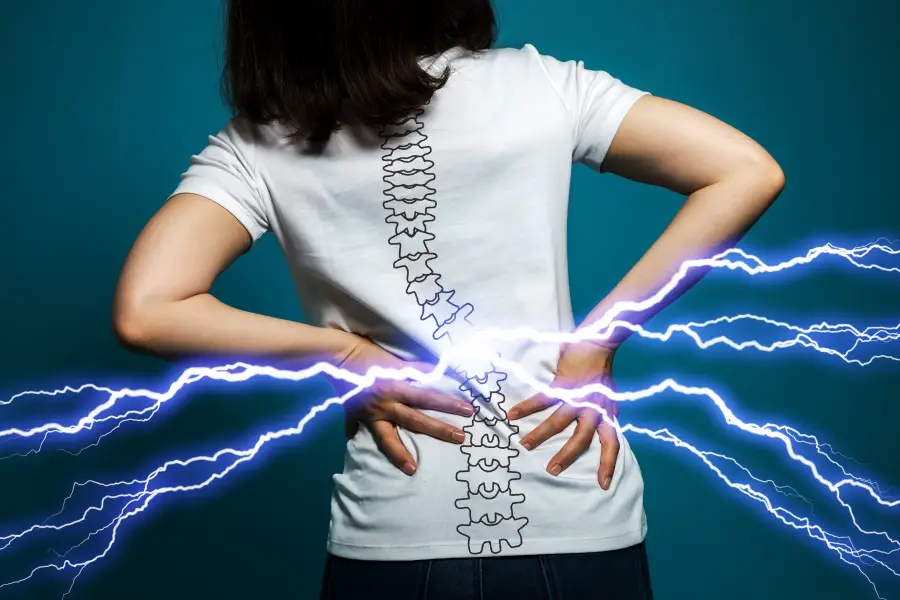Article reviewed and approved by Dr. Ibtissama Boukas, physician specializing in family medicine
A carpet that stings and is supposed to relieve back pain… really? I can already see the skepticism on your face.
Acupressure mat, does that mean anything to you? Some love it, others find the concept absurd. These carpets that are gaining in popularity are debated among users and health professionals. Are they really effective for back pain? Is the investment really worth it?
I give in this article my humble opinion on the acupressure mat. My opinion (and the resulting recommendations) is based on my expertise as a physiotherapist, as well as the experience of my many patients who have tried this product.
Acupressure mat, what is it?
At first glance, an acupressure mat looks like a yoga mat. On the other hand, we see on closer inspection that it is covered with several pins made of plastic and arranged in a circular fashion.
The benefits are derived from a therapy called acupressure (which itself is derived from acupuncture). Basically, acupuncture uses needles applied to different areas to provide therapeutic benefits. As for acupressure, it instead uses pressure (instead of needles) to achieve similar effects.
The mechanisms of action are debated within the various therapists according to their philosophy. On the one hand, acupuncturists and alternative medicine enthusiasts attribute the benefits of acupressure to release of chi (vital energy) within the meridians (energy channels running through the human body). Western medicine, on the other hand, believes that the benefits come from a modulation of the brain to relieve pain and reduce muscle tension.
Either way, acupressure mats are known to improve back pain and promote well-being. They come with several benefits and some disadvantages that would be relevant to elaborate.
The positive points
It is not for nothing that the opinions of users of acupressure mats are generally favorable.
On the one hand, the carpet as such is light and easy to store. With the different types, sizes, and shapes of rugs available on the market, it's easy to find a rug that's right for you.
From a therapeutic point of view, the effect of the pimples provides a feeling of warmth favorable to relaxation and well-being. The analgesic effect (against pain) is also appreciated by those who suffer from back pain.
Because it reduces muscle tension, the acupressure mat is ideal after a hard day, or to reduce stress. It can also be used preventively to avoid an acute episode (muscle spasms, lumbago Or other).
The rug can therefore represent a perfect complement to other approaches aimed at treating lower back pain, as long as it is used appropriately.
Summary of positives:
- Durable
- Economical (if you choose the right carpet!)
- Lightweight and space-saving
- Feeling of benevolent warmth in the back
- Promotes relaxation and well-being (once you get used to it)
- Can act preventively by preventing the accumulation of muscle tension
The negative points
Acupressure mats also come with their own set of potential downsides. Already, it is essential to be aware of the precautions and contraindications to their use. If you suffer from any of the following conditions, please consult a healthcare professional before considering the purchase of an acupressure mat:
- Heart or circulation problems
- Dermatological disorders
- History of falls or epilepsy
- Pregnant women
The pimples can be uncomfortable initially, and sometimes it takes a adaptation time to get used to the carpet (explained in the practical application section).
If in direct contact with the skin, the mat may cause skin reactions. Moreover, some people have difficulty supporting the pain caused by the acupressure mat (Don't panic, there are ways to modulate the sensation!).
Finally, the first sessions can cause strange sensations such as dizziness, drowsiness or tingling in the back. Obviously, the body adapts and these sensations usually end up disappearing and never reappearing during successive sessions.
Summary of negatives:
- Takes some getting used to
- Some can't stand the pain caused
- May cause a strange feeling the first few times (dizziness, drowsiness, etc.)
The alternatives
Acupressure mats are unique in their shape. But there are other types of therapy with similar therapeutic goals. Close-up on some alternatives to these mats, and my opinion on their use:
Acupuncture or acupressure
Obviously, it is possible to call on an acupuncturist or therapist specializing in acupressure to benefit from a more individualized treatment. Indeed, according to these specialists, the treated areas will be more specific in comparison with the mat that covers almost the entire back. On the other hand, it will be necessary to take out the wallet!
Tennis ball
The tennis ball (or other massage ball) can be used to reduce muscle tension. For example, you can lean against the wall placing the ball on a tension area. This option is certainly much more economical, but the sensation felt is very different from that provided by the acupressure mat.
Natural remedies
Here is a non-exhaustive list of plants and essential oils that are effective in controlling pain and inflammation. The products are available on the site Country. Use promo code LOMBAFIT15 if you wish to obtain one of the following products, or any remedy aimed at relieving your symptoms and improving your quality of life:
- Turmeric. Thanks to its antioxidant and anti-inflammatory powers very powerful, turmeric is one of the most used plants in a culinary and therapeutic context. The composition of turmeric is essentially made of essential oils, vitamins (B1, B2, B6, C, E, K) and trace elements. But it is to its composition rich in curcumin and curcuminoids that we owe them and calm skin of this spice.
- Ginger. In addition to the special flavor it brings to the kitchen and its aphrodisiac properties, ginger is a root well known for its anti-inflammatory powers. the gingerol gives it its anti-inflammatory action. It is an active component acting on the inflammatory pain related to chronic joint inflammatory diseases, including rheumatoid arthritis, lupus, rheumatic diseases, etc. It has been proven that this active element is also effective in acting on the inflammation linked to arthritis and sciatica. Ginger also has other benefits thanks to its high potassium content and its richness in trace elements (calcium, magnesium, phosphorus, sodium) and vitamins (provitamin and vitamin B9).
- Omega-3s. Omega-3s are polyunsaturated fatty acids that play a very important role in the functioning of our body. They are provided by food in three natural forms: docosahexaenoic acid (DHA), alpha linolenic acid (ALA) and eicosapentaenoic acid (EPA). Beyond their action on the brain and the cardiovascular system, omega-3s prove very effective against inflammation. Indeed, they have the ability to act on the inflammatory mechanisms in osteoarthritis by slowing down cartilage destruction, thus they reduce the intensity of osteoarthritis pain. Sciatica, being most often linked to an inflammation secondary to a herniated disc, it can also respond to omega-3 provided it is consumed regularly.
- Lemon eucalyptus. Eucalyptus is a plant most often used in the form of herbal tea or essential oil. She would have anti-inflammatory effects which give it the ability to act on the bone and joint pain in general and the pain of sciatica in particular.
- wintergreen. Wintergreen is a shrub from which a very interesting essential oil is extracted. It is one of the most used essential oils in aromatherapy. This oil extracted from the shrub bearing the same name, is used in massage to relieve sciatica and act like a analgesic. Indeed, it provides a heating effect thanks to its ability toactivate blood circulation locally.
My opinion as a health professional (physiotherapist) on acupressure mats
Personally, I see no problem with the use of acupressure mats, quite the contrary! On the other hand, it is essential that the user takes a informed and informed decision on the purchase of this product.
The negative opinions and reviews of the product come, in my opinion, from a semantic and marketing problem. Indeed, no one can deny the benefits provided by the treadmill for many low back pain sufferers (testified by the many favorable opinions).
The problem is when the carpet is given “miracle” properties. This probably comes from the therapeutic virtues attributed to acupuncture and acupressure in general. In my opinion, the mechanism of action of acupressure mats is not not as spectacular as some may claim!
Considering the absence of tangible scientific evidence, it is difficult to believe that the stimulation of meridians (via acupressure points) can cure a condition as complex as back pain. Not to mention digestive disorders, insomnia, eating disorders, smoking, etc.
On the other hand, the acupressure mat does induce real relief. As mentioned earlier, modern science attributes this relief to a desensitization of the brain (which in turn leads to a reduction in pain and a decrease in muscle tension).
As this desensitization is not indefinite, we understand why the mat alone cannot cure your back pain. On the one hand, it takes several sessions to induce a cumulative effect that will allow a noticeable reduction in pain. And the most important thing is to use the mat in addition to an approach based on adapted and progressive exercise (not to mention the optimal management of stress and sleep!).
To conclude: As a physiotherapist, I gladly recommend the use of an acupressure mat. The unique and different stimulation on the back is a plus that will allow you to relieve your symptoms. On the other hand, it is not a miracle product, and should rather be used in addition to an approach that has already proven itself in the past: movement !
Practical application
How to integrate the acupressure mat into daily life? Here are some practical tips to help you get the most out of it:
How to use the mat?
Initially, place an intermediary between you and the acupressure mat when you go to bed. For example, you can put on a towel, or simply put on a t-shirt.
When using the mat, it is best to sleep on your back. Avoid lying on your stomach and sensitive areas (face, throat, ribs, chest, pubis). On the other hand, nothing prevents you from using it in a seated position, or even on the side.
Remember that the level of pressure felt is not necessarily proportional to the degree of relief. Do not absolutely try to go to bed naked from the first sessions. Besides, using a t-shirt is more hygienic, especially if you share the mat with someone.
How long ?
It is often recommended to use the carpet between 15 and 45 minutes on the various websites dealing with acupressure mats. On the other hand, I recommend to my patients to go there in a way progressive to avoid any adverse reactions (discomfort, numbness, etc.).
Start with just 2-3 minutes, then gradually increase the time. Some people prefer to use it at the end of the day after work. I sometimes recommend fragmented use of the mat during the day. The important thing is to integrate it into your daily routine, and use it before the pain becomes too great.
What to do during the sessions?
The important thing is to maintain a feeling of relaxation when using the acupressure mat. Ideally, choose a closed, quiet, and isolated room. (Well, you can also use it on a deserted island!)
Combine acupressure sessions with exercises deep breathing, or even a session of mindfulness meditation.
And while you're at it, why not ask your spouse to give you a head massage?
How to choose your acupressure mat?
There are many acupressure mats on the market. You have to look at several factors such as the quality of the carpet and the pimples, the comfort provided, or the size. The number of pimples does not necessarily matter, especially since there is no evidence showing a relationship between a high number of pimples and greater relief.
Some mats come with magnets, and use an approach based on magnetic therapy. This approach has no scientific basis, so it's up to you whether you want to invest more.
How (and what?) to choose?
I often recommend that my patients try any acupressure mat before making a decision. Most sellers offer a 30-day “satisfied or fully refunded” guarantee anyway..
Then, quality materials (such as composite fabric and ABS material) offer better quality and noticeable comfort. The pimples should not be too painful (some mats have simply intolerable pimples!). In addition, it is better to choose a model that comes with a cushion (also filled with nubs).
This model (number 1 of sales on Amazon!) include all the benefits mentioned above, and offer a very interesting quality / price ratio.
Acupressure belt and cushion: What are they useful for?
As you may have noticed, some mats are sold with accessories such as an acupressure belt or an acupressure cushion. What are they used for, and are they really useful?
The cushion, as you imagine it, is specially designed for the neck and cervical. Some people can do without it. Indeed if you only suffer from lower back pain but your neck is in perfect health, such a purchase is not necessarily necessary.
However, if the main area that gives you pain is in the cervical area (cervical spondylosis, cervical discopathy, etc.) It may be interesting to opt for such an accessory. (You can also roll or fold the mat or place a cushion under it so that it conforms to the shape of your neck).
If you just use the pad alone, the feeling of stimulation may be less impressive than when you use the mat on your back (especially the 1st times).
The cushion will therefore be ideal if your pain is mainly in the neck and neck. You can get an acupressure cushion alone (without the mat) made with natural materials that are healthy for the skin and the environment (linen fabric, filled with buckwheat husk, etc.).
The acupressure belt, on the other hand, is mainly useful for some people who would like target a particular area, to stimulate the body in a very specific place or for those who will find a specific use for it.
Conclusion
It is often said that the best solution to back pain is movement. That's a fact. This implies that it is necessary to limit prolonged postures, in addition to adhering to a daily and regular exercise program.
On the other hand, there are several other modalities that can help relieve pain and improve quality of life. The acupressure mat is one of them.
If used intelligently, and combined with an active approach, this mat can relieve your symptoms, reduce muscle tension after a hard day, in addition to promoting relaxation and well-being.
Good recovery!
If you want to know the opinion of health professionals on other products focused on back pain:

